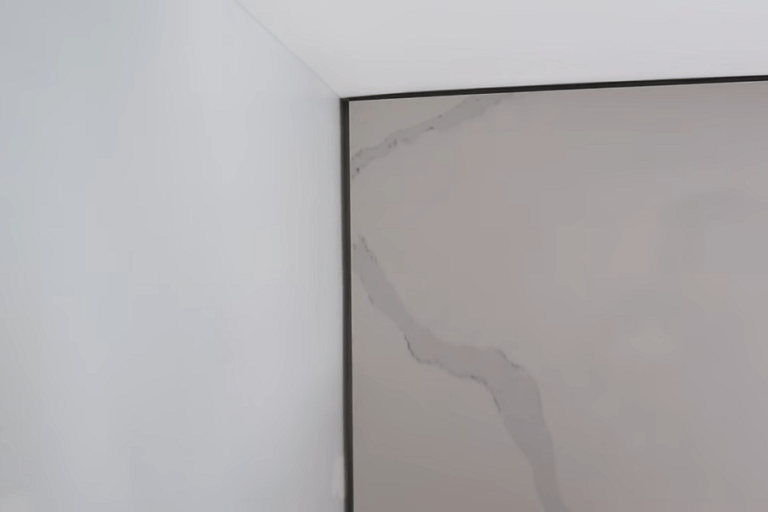
How Big of a Gap Can I Fill with Drywall Mud? [Explained]
Drywall mud/joint compound is used to finish drywall joints surface and fix other issues.
The mud can fix any type of mid or low gap of drywall. But the question is, how big of a gap can fill drywall mud?
It depends on the mud types and drywall joint surface. Generally, ½ inch can easily fill up with joint compound. You should use a specific type of joint compound for fixing large joints. Because it could not be stick properly, there is a future risk of crack.
I will explain everything about fixing the large drywall gap in this article.
How do you fill large joints in drywall with joint compounds?
Use joint compound directly if your joint gap length is less than ¼ inch.
If it is ½ inch, the compound sometimes can not hold properly on the joint gap. So use mesh tape on the gap, then apply mud on it.
Don’t use fiberglass tape. Mud can not stick well on it.
Use sheetrock easy sand 90 joint compounds to cover the gap. Make the compound consistency thick (like glue).
You should check the tutorial video.
Should I fill drywall gaps before taping
It depends on the size of the joint. If drywall joints size less than ½ inches, you should use mesh tape and apply mud on it. If the size is more than ½ inch, you should follow different methods. It will be described in the below.
Paper tape isn’t recommended for filling 1/2-inch gap projects.
What is the best drywall mud for filling large gaps?
Setting type compound/hot mud is best for filling large drywall gaps. There are also pre-mixed and all-purpose joint compounds available. But they do not do a good job, like hot mud.
I already describe about premix vs setting type joint compound. You can check.
I choose the best 2 joint compounds. Those are recommended for your drywall project.
Sheetrock lightweight joint compound
Sheetrock is good joint compound. Manufactured by reputed USG.
It can easily deal with your large joint issue. Mix with the right amount of water and make it as glue thickness, then apply with a putty knife on the joint area. It will dry within 90 minutes.
I don’t find any bad review about this product online. But someone said this product is not beginner-friendly to apply.
With little practice, you can prepare for it.
Overall good product.
Durabond setting type joint compound 90
The same manufacturer, USG, also makes Durabond.
But it has some different specific features which make it different.
When Durabond dries, it gets harder. Streetrock also gets hard, but Durabond is harder. Durabond is impossible to sand. It sticks like iron.
You can use this product outdoor also. On the other hand, Streetrock is only used indoors.
This product can be a good alternative but is not beginner-friendly. Make mud like the same as Streetrock and apply the joint area.
It will take an average of 90 minutes to dry and stick super hard.
If you are finding for very strong adhesive compound with a very hard stick, you can choose this one.
But Sheetrock is always recommended for everyone.
Can I fill a 1-inch gap with drywall mud?
One inch is a big fill gap. Within ½ inch is ok to go with joint compound mud.
For 1 inch plus, instead apply mud, you can go with expansion foam, caulk with rope, drywall patch, thin cut wood/plywood, caulk, or plaster paris.
These are different methods, and all work perfectly. So in your hand have many options for filling the big gap.
Best way to fill large gaps in drywall more than 1 inch
There are a lot of methods for filling the drywall joint gap.
Expansion foam
It is a very useful product for filling big joints of drywall. You can fill up any big gap with this product.
It is very simple to use. Just select your gap area, then spray foam on the area. It will dry fast, and it will look like popcorn after drying.
Remove the unnecessary foam after drying, and apply your first coat of joint compound to cover it.
Petty simple.
This is how to use tutorial. I hope it can help you.
Note: Great stuff is recommended foam for this type of work.
Caulk with filler rope backer rod
This is also one of the best methods for fill gaps. Caulk with filler rope combo hide the gap perfectly
First, select your gap area. Then fill it with filler rope. When it fills all gaps, crop it from the ending side. Then apply caulk to the rope. And finishing with a putty knife.
This is a relevant tutorial video.
Plaster of paris
This method is not beginner-friendly. You need some experience before applying plaster paris.
Plaster paris apply in a one-time coat. It sticks hard and is not sandable.
It would help if you made the powder sticky with water. Then take a putty knife and apply the gap.
It can cover large gaps without issue.
This is a tutorial video to follow.
Conclusion
Drywall mud has the ability to fill mid and small joint gup without issue. But for a big gap, you need to choose alternative working methods.
I hope you know how drywall mud can fill gaps and how to do it. If you think this article is helpful, please share it with your friends and family.